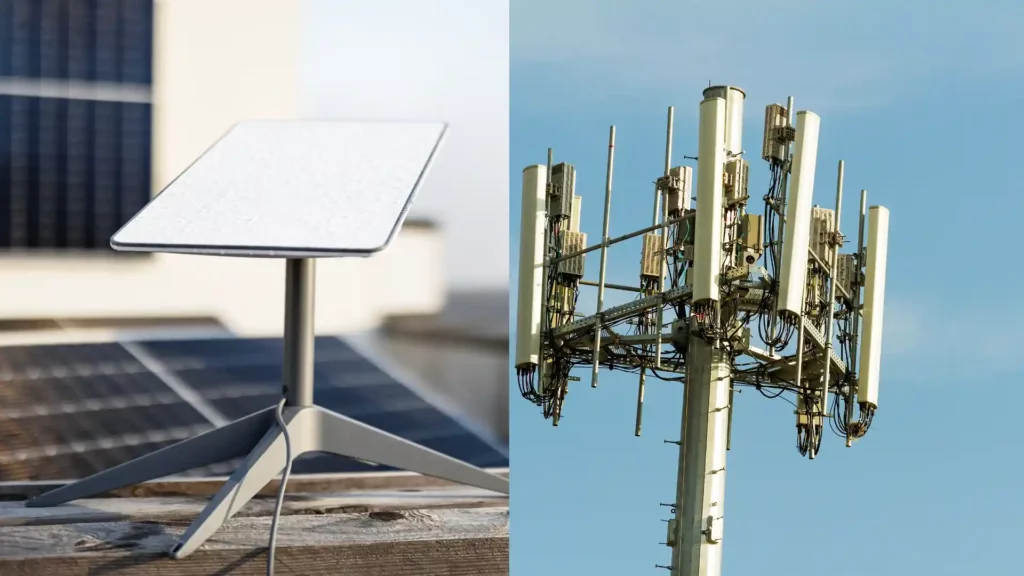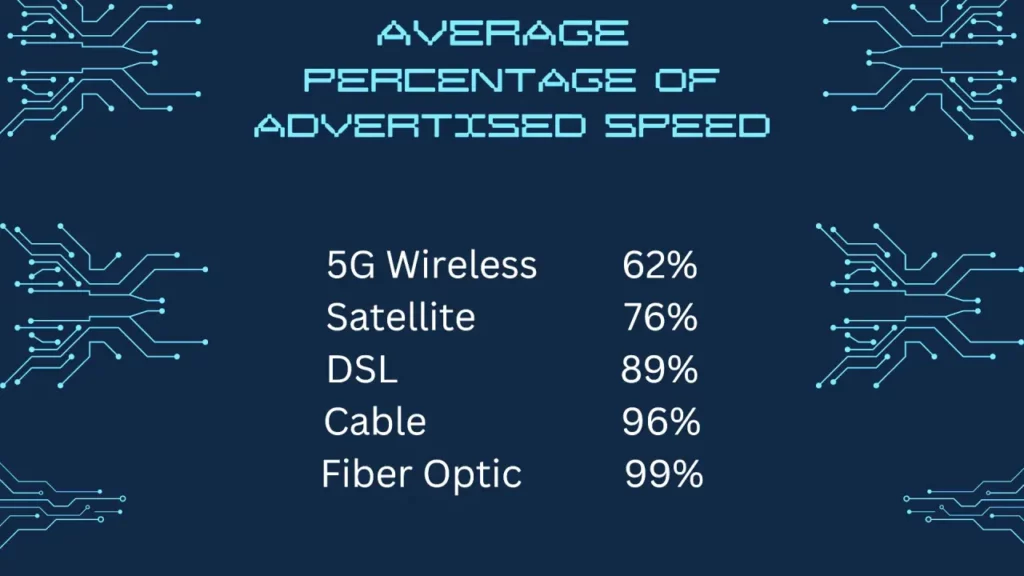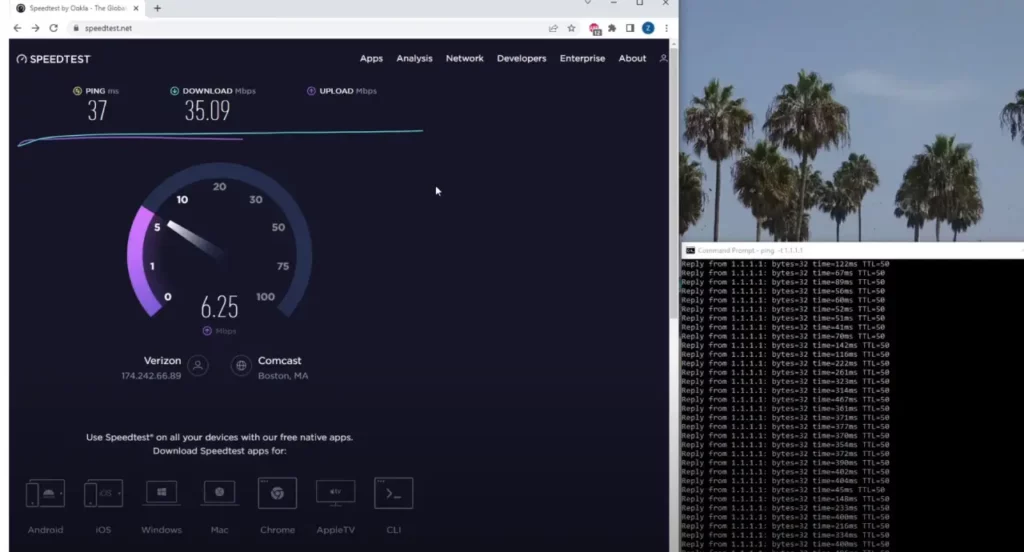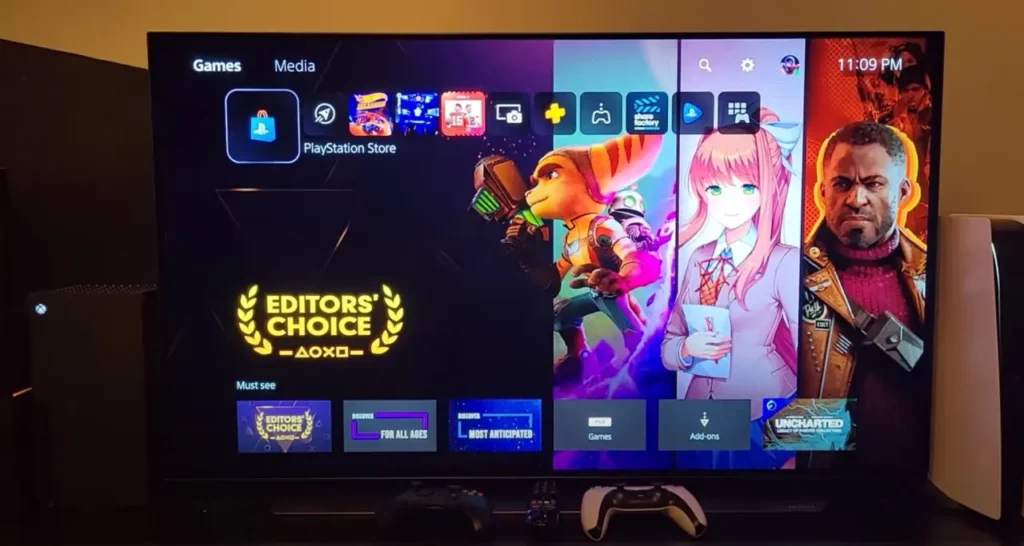Starlink Internet Service and 5G home internet service from providers including T-Mobile and Verizon are providing some much-needed competition in the internet service market. Both 5G and Starlink have several advantages and disadvantages to them that you should be aware of.
TL;DR Answer: 5G home internet from Verizon and T-Mobile has the potential to offer faster speeds and lower latency than Starlink. In real-world testing, 5G speeds varied greatly from location to location and by the time of day. Starlink has better availability in rural areas because it is satellite-based. Pricing with 5G home internet is significantly less expensive than with Starlink. The expensive nature of launching satellites makes it unlikely that Starlink will significantly come down in price.

Table of Contents
Primary Differences Between Starlink and 5G Internet
- Starlink has significantly more coverage, especially in rural areas
- 5G home internet is generally less expensive than Starlink
- Starlink is more complicated to set up properly
- 5G home internet is more widely available in urban and suburban communities
- 5G home internet generally offers unlimited data, whereas Starlink offers 1 TB or priority data
- T-Mobile Home Internet can be bundled with a T-Mobile cell phone plan for additional savings.
| Starlink | 5G Home Internet | |
|---|---|---|
| Type of Technology | Low Earth Orbit Satelllite | 5G Cellular |
| Release Date | 2020 | 2018 Verizon 2021 T-Mobile |
| Download Speeds | 35 – 140 Mbps | 20 – 300 Mbps |
| Upload Speeds | 5 – 10 Mbps | 5 – 25 Mbps |
| Latency (Ping) | 45 ms – 75 ms | 30 ms – 100 ms |
| Ping Stability | Fair/Good | Fair/Poor |
| Ease of Setup | Easy | Medium |
| Upfront Cost | $599 Standard $2,500 High Performance | $0 |
| Monthly Service Cost | $90 – $110 | $30 – $55 |
| Contracts | No | No |
| Free Trial | No | 15 days |
| Data Caps | No | 1 TB Priority Access |
Starlink vs T-Mobile Home Internet vs Verizon 5G: Pricing
Starlink is generally the more expensive option both upfront and as an ongoing monthly expense. Starlink residential costs between $90 – $110 per month, depending on your service address location.
Starlink also requires, at minimum, the upfront purchase of your Starlink Terminal (Dish), which costs $599. This also includes a very basic wireless router and all necessary cables. An optional high-performance Starlink Terminal is also available to Starlink Residential customers and costs $2,500.
5G home internet generally costs between $30 – $55 depending on the carrier and whether you are bundling your service with a qualifying cell phone plan.
Starlink vs T-Mobile Home Internet Pricing
For example, you can currently get T-Mobile Home Internet for $50 per month or for $30 per month with select T-Mobile Cell Phone Plans. Taxes and fees are included in the pricing with T-Mobile Home Internet.
Starlink vs Verizon 5G Home Internet Pricing
Verizon 5G Home Internet is available for $50 per month with autopay enabled. Without autopay, the price is $60 per month. With select Verizon cell phone plans and autopay pricing, as low as $25 per month is possible.
| Starlink Internet | Verizon 5G Home Internet | T-Mobile Home Internet | |
| Cost Per Month | $90 – $110 | $25 – $60 | $30 – $50 |
| Upfront Cost | $599 | $0 | $0 |
There is no equipment rental fee with Starlink or with 5G home internet. However, Starlink requires purchasing equipment upfront. With most 5G home internet services, you are provided the 5G gateway at no additional cost beyond your monthly service cost.
Service Availability
Starlink is widely available in North America, with a couple of notable exceptions. These exceptions include the following:
- Areas greater than 53 degrees north latitude
- Areas without sufficient capacity (allowing people to join the waitlist.)
In general, Starlink is available to a very large percentage of people living in the United States and Canada. This includes remote locations and rural villages that lack the infrastructure for other internet services. Space based satellite internet using low earth orbit satellites is ideal for covering large rural areas.
Starlink has a waitlist that some areas are currently subject to. This is because Starlink does not have enough network capacity in these areas to keep adding additional customers. Check out the Starlink Availability Map and see if you are eligible for Starlink Internet Service.
5G home internet is available in many areas, but coverage is less ubiquitous than with Starlink. 5G home internet runs off of the same cell towers that are used to provide 5G service to cell phones. If you live in a location with little to no cell phone signal, 5G home internet will not be an option for you. T-Mobile is currently the leader in 5G home internet coverage.
Unfortunately, this is surprisingly common in many rural areas. In some cases, it is also possible to have cell phone service and still not be eligible for 5G home internet at your service address. Verizon and T-Mobile both limit the sale of their home internet service to locations that they believe have sufficient cell tower capacity.

Download and Upload Speeds
| Starlink Internet | Verizon 5G Home Internet | T-Mobile Home Internet | |
| Average Download | 40 – 110 Mbps | 40 Mbps – 85 Mbps | 30 Mbps – 80 Mbps |
| Average Upload | 5 Mbps – 15 Mbps | 5 Mbps – 20 Mbps | 5 Mbps – 10 Mbps |
Speeds with Starlink and 5G home internet vary greatly by location and by the time of day. Neither service is consistently faster than the other. I saw 5G internet speeds that were both the highest and the lowest. Starlink service was a little more consistent in terms of speed but also varied somewhat by location.
Theoretical speeds are higher for 5G internet. Under lab conditions, 5G internet service using millimeter wave technology can easily reach gigabit speeds. Lower band 5G can reach about 200 Mbps under ideal conditions.
Real-world speeds with 5G usually fall short by a significant margin. This is typical with most wireless technologies. Real-world speeds of 300 Mbps are about average in millimeter wave coverage areas.

Starlink Internet Speed
Starlink currently averages between about 40 Mbps and 110 Mbps download speed. This is significantly higher than most DSL plans and other satellite internet providers which typically top out at about 25 Mbps.
Upload speeds on Starlink was generally between 5 Mbps and 15 Mbps during my testing. Rarely did it go any higher than 15 Mbps.
Interestingly, I saw faster speeds a year ago when testing Starlink for the first time. This is most likely because network capacity is growing at a slower rate than customer demand.
Starlink has repeatedly said that they expect speeds to increase as more LEO Starlink satellites are launched into orbit. So far, this has not proven to be the case based on my testing or the reports from Ookla’s Speed Test.
5G Home Internet Speed
My testing and research in non-millimeter wave areas showed download speeds typically in the 30 – 80 Mbps range most of the time. During peak hours, speeds were even lower.
On average, I found Verizon 5G home internet to be faster than T-Mobile 5G home internet. However, this was not true in all cases.
Upload speeds ranged from about 5 Mbps or less during peak hours to 25 Mbps during the middle of the night. Verizon was faster on average than T-Mobile, but not by that much.

Latency and Stability: Starlink vs T-Mobile Internet vs Verizon 5G
| Starlink Internet | Verizon 5G Home Internet | T-Mobile 5G Home Internet | |
| Average Latency (Off Peak Hours) | 40 ms – 70 ms | 30 ms – 80 ms | 45 ms – 100 ms |
| Average Latency (Peak Hours) | 40 ms – 80 ms | 50 ms – 110 ms | 60 ms – 140 ms |
| Latency (Max Spikes) (Off Peak) | 100 ms – 110 ms | 200 ms – 300 ms | 350 ms – 800 ms |
| Latency (Max Spikes) (Peak) | 100 ms – 110 ms | 500 ms – 1,000+ ms | 1,000+ ms |
Starlink Latency and Stability
Starlink Internet offers latency (ping) in the 40 – 70 millisecond (ms) range. This is significantly better than the 500+ ms that traditional satellite internet services, including HughesNet and Viasat, have. For anyone who has used satellite internet in the past, even 70 ms sounds amazing.
The bigger issue with Starlink is the occasional drops in signal. Despite SpaceX launching additional satellites into low earth orbit, drops are still an issue with Starlink. The number of drops that I observed was significantly lower than in the previous year but still far from zero.
Gaming is possible on Starlink, but the drops are frustrating, and the ping is not as good as with traditional cable or fiber internet. My testing using Starlink for gaming showed that it works, but you could get dropped at any moment.
PC Mag did a comprehensive review of gaming on Starlink and came to a similar conclusion. Gaming worked okay, but drops were a point of frustration.
T-Mobile Home Internet and Verizon 5G Home Internet Latency and Stability
5G home internet offers average latencies of between 30 ms and 100 ms. On average, Verizon offered slightly lower latency than T-Mobile Home Internet. Both services offered acceptable latency most of the time during off-peak hours.
During peak hours, I saw frequent ping spikes to 1,000 ms or higher. This was more prevalent in areas where the cell phone tower was already operating near max capacity. 5G home internet is able to offer ultra-low latency under ideal conditions.
Under lab conditions, using millimeter wave frequency bands, 5G latency as low as 5 ms has been demonstrated. In real-world conditions, 5G home internet using millimeter-wave technology 25 ms – 40 ms is typical. Real-world testing of the lower 5G bands that are more widely available shows that 50 ms – 100 ms is about typical for most 5G deployments.
The real issue with 5G home internet is not the average ping, it is the frequent spikes in ping. An internet connection that frequently spikes to 500+ ms or even 1,000+ ms is unsuitable for anything that requires a stable, low-latency internet connection.
Gaming on 5G home internet is not the best experience. You can be playing and, out of nowhere, experience a massive spike in latency. Games that require low latency, such as Call of Duty and Fortnite, are especially affected.
Zoom calls and other VoIP technologies are also negatively impacted by unstable ping. This is especially impactful for anyone who works from home and relies on this technology to do their jobs.

Reliability of Service
Based on my testing, both services are generally reliable overall. I did notice a little more downtime with Starlink than with either of the 5G home internet services. With 5G home internet, I did not experience any significant outages.
Despite Starlink offering a more stable ping, Verizon 5G Home Internet and T-Mobile 5G Home Internet actually proved to offer better reliability overall.
I did not find reliability to be a significant issue with either service but would give a slight edge to 5G home internet. This makes sense when you consider the nature of how Starlink works, which requires the constant tracking of rapidly moving satellites. 5G cellular uses wireless communications to make the last-mile connection to the user. The tower itself is generally connected to the internet via fiber.
Customer Service
Telecommunications companies are notorious for offering bad customer support. Based on my experience and the experiences reported by others on Reddit, I would rate them from best to worst in this order.
- T-Mobile Home Internet
- Verizon 5G Home Internet
- Starlink Internet
T-Mobile Home Internet Support Experience
T-Mobile offered the best support experience based on testing. The T-Mobile reps I spoke with were all friendly and easy to understand. For the most part, they were able to resolve any common issues.
Canceling my T-Mobile Home Internet proved to be extremely easy, and there were not a bunch of hoops to jump through to cancel.
Verizon 5G Home Internet Support Experience
Verizon offered similar support to T-Mobile. The downside with Verizon, at least based on my experience, was the amount of time spent on hold. When compared to T-Mobile, I was put on hold for longer and transferred more often.
However, Verizon offered support that was acceptable and on par with the industry average. Overall I would not let the support offered by Verizon deter you from signing up. Verizon was able to help me when I needed it, and despite spending more time on hold, it wasn’t a terrible support experience.
Starlink Internet Support Experience
Starlink offers support in a nontraditional way. They do not provide a phone number or even an email address when you can contact them. Instead, they make you fill out a support ticket via the Starlink website or mobile app.
Response times were slow, often taking several days or more. There were also a couple of issues that the Starlink reps had a hard time troubleshooting.
Based on my research and what others have said on Reddit, Starlink is in a distant 3rd place here regarding customer service and support.
Alternatives to Consider
Given that you are looking at a comparison of Starlink and 5G internet services, it is likely you do not have many alternatives available at your service address. However, here is a list of a few other internet service providers that, based on my experience and first-hand testing, are also worth checking out.
- Verizon Fios
- Xfinity Internet
- Spectrum Internet
- AT&T Fiber Internet
- Fidium Fiber Internet
- Breezeline Internet
Any of the ISPs listed above offer services that generally outperform most 5G home internet services, as well as Starlink. They also oftentimes offer better pricing, especially compared to Starlink.
Who is 5G Home Internet Best For
5G home internet from T-Mobile and Verizon is best for people who live in an area with good 5G signal strength and preferably with millimeter wave technology installed. It is also ideal for people who are looking for a less expensive option for connecting to the internet and do not need the best performance possible.
Based on my testing in multiple cities, Verizon 5G offers great speeds in millimeter wave coverage areas. Verizon 5G almost rivals cable and fiber-based services in those areas.
In areas that only have access to the lower band, 5G signals performance is much lower. T-Mobile Home Internet offers a compelling value to those who already have a select cell phone plan with T-Mobile and can get their home internet service for just $30 per month.
5G home internet is also better than Starlink for homes with excessively dense tree coverage. Starlink being a satellite internet technology needs a relatively clear view of the sky to operate. 5G home internet does not have this limitation.
Who is Starlink Internet Best For
Starlink Internet is best for people who live in rural areas that lack access to alternatives such as cable, fiber, or even 5G. Starlink is better for gamers who need a stable ping to use services such as Xbox Live, PlayStation Network, and Steam.
Based on my testing Starlink is a great option for anyone who currently has internet service with HughesNet, Viasat, or any other legacy satellite internet provider. Starlink offers much better performance, and the difference is like night and day.
Starlink is also best for people that have properties with a clear view of the sky. In order to connect to a satellite, your Starlink dish needs an unobstructed view of the sky. Starlink makes this relatively easy using the Starlink app. However, Starlink will always be susceptible to anything blocking this line of sight. This means that stability could be an issue for many people, and random drops are always possible.
What is Starlink and 5G
Starlink is a low earth orbit satellite internet service from SpaceX. They focus on providing satellite internet to underserved regions of the world. Starlink internet technology allows for much lower latency than legacy satellite internet services.
SpaceX has revolutionized the idea of using low earth orbit satellites to provide lower latency than traditional geostationary satellites. SpaceX has also greatly reduced the cost of launching satellites into orbit. This is essential given the large number of satellites planned to make up the SpaceX Starlink constellation.
5G is 5th generation cellular technology. It is an improvement over 4G LTE and offers higher speeds with lower latency. 5G comes in different flavors. There is millimeter wave 5G which offers the fastest speeds, and there is low and mid-band 5G which offers lower speeds but increased range.
Conclusion: Starlink vs 5G from T-Mobile and Verizon
Starlink and 5G are both exciting options for internet connectivity. The better choice will ultimately come down to your location and what is most important to you. For most people, 5G internet is probably the better option assuming it is available to them.
5G home internet is providing some much-needed competition in the home broadband internet market. In addition to driving down prices, 5G is also driving innovation on the wired side of things as well. In response to 5G, Comcast is getting ready to roll out a new 10 Gbps internet service to millions, and other legacy ISPs are following suit.
Starlink has the unique advantage of being able to offer internet access to remote areas that lack access to 5G and other connectivity options. For these people, Starlink is a lifesaver. Starlink speeds have fallen somewhat over the last year, but hopefully, that will reverse, and we will see bandwidth increase throughout the year.
The fact that Starlink is bringing high-speed internet to areas that have never had it before makes it truly a game changer. Starlink also offers its Roam service (formerly known as Starlink for RVs), which can be used to get Starlink Internet anywhere there is coverage, albeit at a slower deprioritized bandwidth level.
